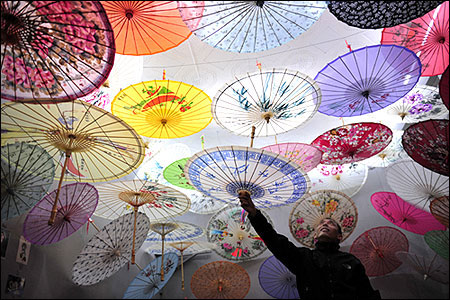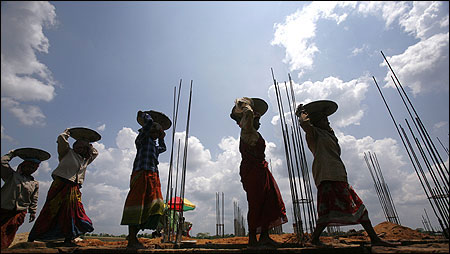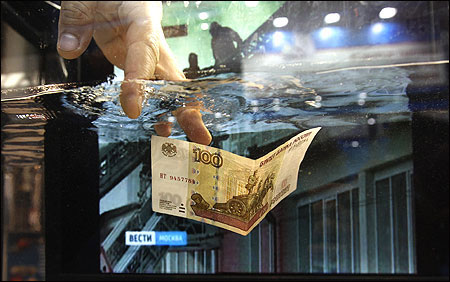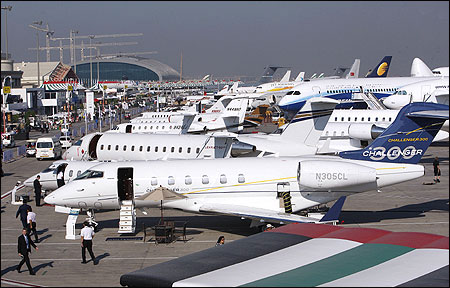 | « Back to article | Print this article |
The world's top 10 emerging economies
The term 'emerging market economy' was coined in 1981 by Antoine W Van Agtmael of the International Finance Corporation of the World Bank.
An emerging market economy is defined as an economy with low to middle per capita income.
Such countries constitute approximately 80 per cent of the global population, and represent about 20 per cent of the world's economies. (Source: Investopedia.com)
Even though emerging markets generally do not have the level of market efficiency and strict standards in accounting and securities regulation like advanced economies -- such as the United States, Europe and Japan -- they are most sought after by investors for the prospect of high returns, as they often experience faster economic growth as measured by GDP.
Click on NEXT to find out about the top 10 emerging economies in the world...
The world's top 10 emerging economies
China
Since economic liberalization began in 1978, China's investment- and export-led economy has grown 90 times bigger and is the fastest growing major economy in the world today.
According to the International Monetary Fund, the Chinese economy will growth a healthy 9.5 per cent in 2011, down from 10.3 per cent growth in 2010.
IMF said if China is serious about slowing the economy in an effort to curb inflation and burst any sectoral bubbles, it might have to consider raising interest rates.
However, calls for a more flexible forex policy, letting the yuan float against the US dollar, are highly unlikely.
The yuan has been appreciating on average of 5.5 per cent annually to about 6.5 yuan to the dollar.
Click on NEXT for more...
The world's top 10 emerging economies
India
A report by consultant PwC suggests that the Indian economy would surpass the Japanese economy in 2012. But March's devastating tsunami and earthquakes in Japan may have brought the event forward.
According to a senior economist in rating agency Crisil, India should overtake Japan in 2011 to become the third-largest economy in the world at purchasing power parity.
Numbers from 2010 show that the Japanese economy was worth $4.31 trillion, with India following closely at $4.06 trillion.
The IMF expects the Japanese economy to contract 0.7 per cent this year while India is expected to grow 8.2 per cent.
India is the ninth largest economy in the world by nominal GDP and the fourth largest by purchasing power parity.
The country is a part of the G-20 major economies and the BRICS, in addition to being partners of the ASEAN.
India has a per capita GDP (PPP) of $3,586 as per 2010 figures.
Click on NEXT for more...
The world's top 10 emerging economies
Russia
In 2011, the growth of the Russian economy will be 4.8 per cent. However, the inflation rate in the country will reach 8 per cent, a report from the International Monetary Fund said.
Russian President Dmitry Medvedev recently gave assurances that Russia's economy will be kept open to international commerce as he tried to shore up investor confidence ahead of his country's all-but-assured accession to the World Trade Organization.
It has undergone significant changes since the collapse of the Soviet Union, moving from a centrally planned economy to a more market-based and globally integrated economy.
Russia is the eleventh largest economy in the world by nominal value and the sixth largest by purchasing power parity (PPP).
The country has an abundance of natural gas, oil, coal, and precious metals.
Click on NEXT for more...
The world's top 10 emerging economies
Brazil
Brazil will become the world's sixth largest economy in 2011 due to the global financial crisis that has affected the main economic powers, the International Monetary Fund said.
It is one of the fastest-growing major economies in the world with an average annual GDP growth rate of over 5 per cent.
The country has moderately free markets and an inward-oriented economy.
Brazil's economy is the largest in Latin American nations and the second largest in the western hemisphere.
Click on NEXT for more...
The world's top 10 emerging economies
Turkey
Turkey's economy is increasingly driven by its industry and service sectors, although its traditional agriculture sector still accounts for about 30 per cent of employment.
An aggressive privatisation program has reduced state involvement in basic industry, banking, transport, and communication, and an emerging group of middle-class entrepreneurs is adding dynamism to the economy.
Turkey has the world's 15th largest GDP-PPP and 17th largest nominal GDP.
The country is among the world's leading producers of agricultural products; textiles; motor vehicles, ships and other transportation equipment; construction materials; consumer electronics and home appliances.
Click on NEXT for more...
The world's top 10 emerging economies
Mexico
Mexico's economy is the world's 11th largest by World Bank estimates and total output is expected to grow by roughly 4 per cent this year after a 5.5 per cent expansion in 2010.
Mexico has a free market economy in the trillion dollar class. It contains a mixture of modern and outmoded industry and agriculture, increasingly dominated by the private sector.
Click on NEXT for more...
The world's top 10 emerging economies
Indonesia
Indonesia is the largest economy in Southeast Asia and is one of the emerging market economies of the world.
The country is also a member of G-20 major economies.
It has a market economy in which the government plays a significant role by owning more than 164 enterprises and administers prices on several basic goods, including fuel, rice, and electricity.
Click on NEXT for more...
The world's top 10 emerging economies
Poland
Poland has pursued a policy of economic liberalization since 1990 and today stands out as a success story among transition economies.
In 2010 the Polish economic growth rate was 3.8 per cent, which was one of the best results in Europe.
The Polish state has steadfastly pursued a policy of economic liberalisation.
The privatisation of small and medium state-owned companies and a liberal law on establishing new firms has encouraged the development of the private business sector, which has been the main drive for Poland's economic growth.
Click on NEXT for more...
The world
United Arab Emirates
Strong oil prices along with an upsurge in tourism, trade and communications will lift UAE's economy by nearly five per cent in 2011, sharply higher than the growth rate in 2010.
GDP growth will remain at that high level in 2012 and the level is considered as one of the best growth rates in the Middle East and North Africa, Pricewaterhouse-coopers (PWC) said.
An IMF report noted that despite higher international food prices, the inflation rate at consumer level is expected to remain moderate at 4.5 per cent in the country, as property rents continue to decline.
Besides, the UAE's unemployment rate is at low level of 4.2 per cent.
Click on NEXT for more...
The world
Thailand
Thailand's economic growth slowed in the second quarter due to supply chain disruptions caused by the earthquake and tsunami in Japan.
It is a heavily export-dependent economy, with exports accounting for more than two thirds of gross domestic product.
Thailand experienced GDP growth by 8.0 per cent in 2010 making it one of the fastest growing economies in Asia and the fastest growing economy in South East Asia.
The country has a GDP of baht 9.5 trillion, or $584 billion (PPP) making it the 24th largest economy in the world.










